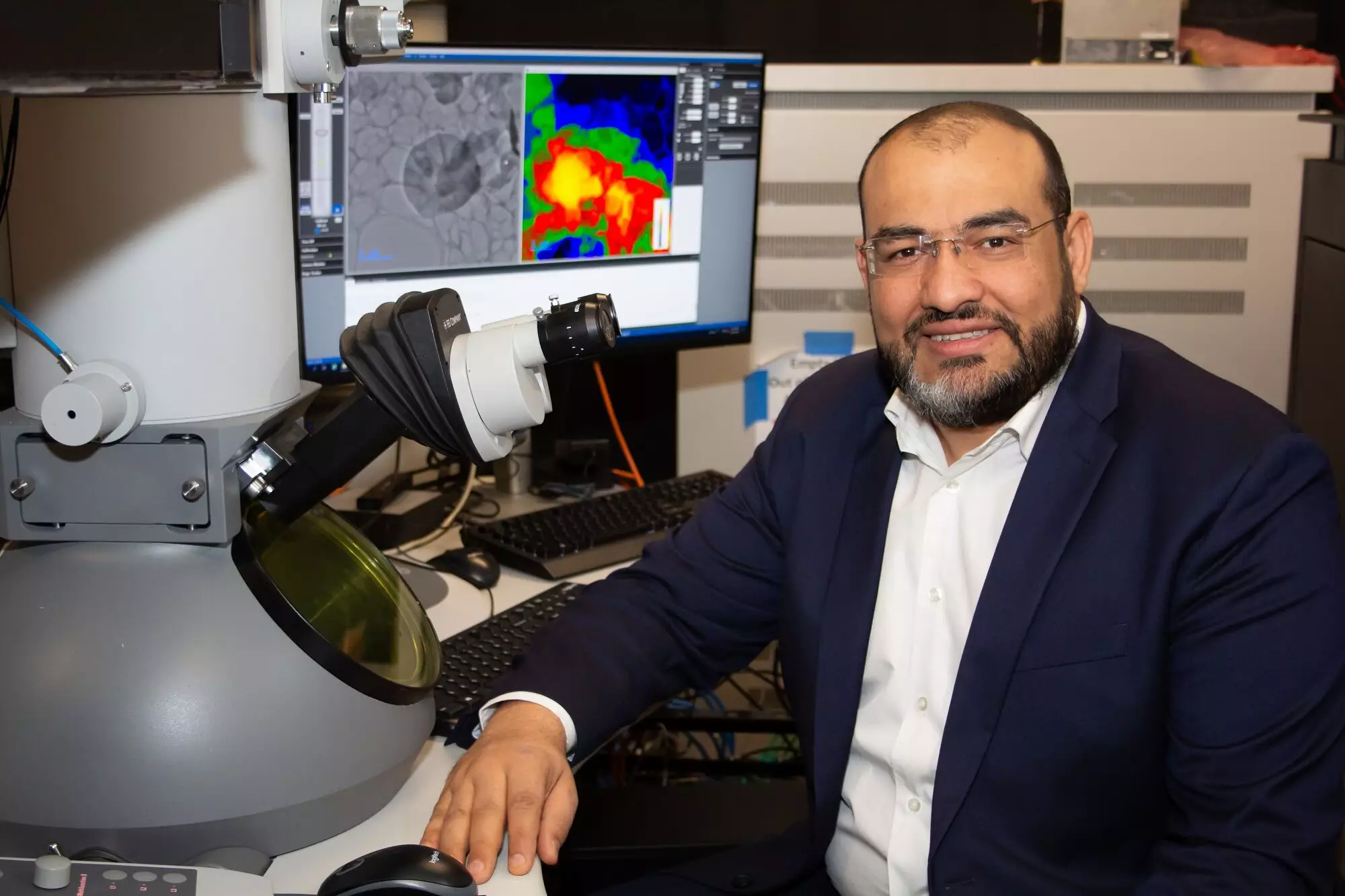In a significant leap forward for the field of electron microscopy, researchers at the University of Arizona have unveiled a groundbreaking tool capable of capturing the rapid motion of electrons. This technological marvel has the ability to freeze-frame an electron moving at lightning speed—an object quick enough to circle the Earth multiple times in mere seconds. This innovative microscope stands at the forefront of research in various domains, including physics, chemistry, and bioengineering. By elucidating the behavior of electrons, this advancement promises to transform not merely our understanding of quantum mechanics but also the practical applications of materials science.
Lead researcher Mohammed Hassan has drawn an intriguing parallel between the evolution of smartphone cameras and this extraordinary microscope. “Just as the latest smartphones feature enhanced cameras for capturing high-resolution images, our new transmission electron microscope allows us to visualize phenomena that were previously beyond our reach,” he notes. By offering a glimpse into the sophisticated dynamics of electron behavior, this technological upgrade could fuel unprecedented scientific breakthroughs and foster deeper comprehension of matter at the quantum level.
Understanding Transmission Electron Microscopy
At its core, transmission electron microscopy (TEM) serves as a method for magnifying microscopic substances to levels unattainable by conventional light microscopes. Unlike the latter, which utilizes visible light to illuminate specimens, TEM employs a beam of electrons that penetrate and engage with the sample. This interaction, captured by sophisticated detection systems, enables researchers to generate exquisitely detailed images of the material under investigation.
The advent of ultrafast electron microscopes in the early 2000s marked a pivotal evolution in this field. These devices harness the power of lasers to produce pulsed electron beams, significantly enhancing their temporal resolution—the capability to detect rapid and transient events. In traditional imaging, the swift shutter speeds of a camera might dictate clarity, but with ultrafast microscopy, it is the short duration of the electron pulses that defines the quality of the images collected.
In their quest to enhance electron microscopy further, the University of Arizona team turned their attention to attosecond pulses, a unit of time so brief that it measures one quintillionth of a second. While previous setups achieved electron imaging at a few attoseconds, critical moments during electron movement remained elusive, much like missing frames in an action film. The team’s innovation lay in generating a single attosecond electron pulse, a feat that significantly bolsters the temporal resolution of TEM and captures electron motion in real-time.
Inspired by the groundbreaking work of Nobel Prize laureates Pierre Agostini, Ferenc Krausz, and Anne L’Huilliere—who were recognized for their contributions to the generation of attosecond pulses—the researchers devised a microscope that effectively splits a powerful laser beam into two components. The first component, known as the pump pulse, energizes the sample and instigates rapid electron movements. Simultaneously, a second pulse, referred to as the optical gating pulse, governs the brief window during which the attosecond electron pulse can be generated, thus orchestrating a meticulously timed analysis of electrons.
By harmonizing these two pulse types, the team could precisely control the moment when electron probes interacted with the sample, yielding insights into atomic-level processes that unfold in record time. This meticulous synchronization is akin to conducting a symphony, with each element playing a crucial role in unveiling the intricate dance of electrons.
As this revolutionary microscope paves the way for an enhanced understanding of quantum phenomena, its implications for scientific advancement are monumental. The potential to observe and quantify electron behavior in real-time opens up a treasure trove of possibilities across multiple disciplines. The repercussions reverberate not just in fundamental research; practical applications may soon extend into industries such as nanotechnology and advanced materials development. The profound ability to visualize the minutiae of electron dynamics could lead to innovations in everything from drug delivery systems to the design of next-generation materials.
The development of the fastest electron microscope at the University of Arizona represents an unprecedented leap in scientific imaging technology. By unveiling the invisible and permitting scientists to probe atoms in ways previously thought impossible, this evolution not only enriches our understanding of the microscopic world but also lays the foundation for transformative advances in various scientific fields. As researchers imagine the limitless possibilities this instrument unveils, the scientific community stands on the brink of unraveling secrets that have long eluded understanding.


Leave a Reply